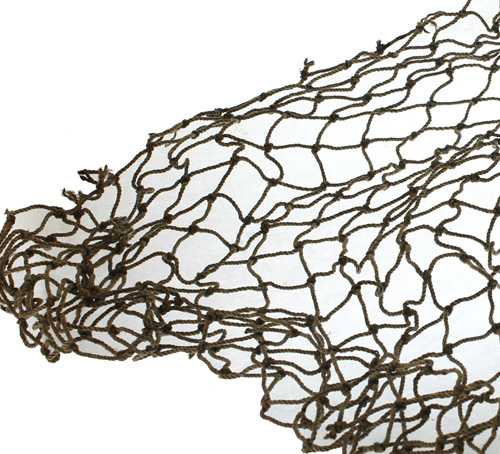Not directly, no, but you are connected in a sense.
The big thing to realize is that the Internet isn't just one protocol. It's a series of protocols, each of which performs a specific task. They combine into a thing called a stack which, between the various protocols inside it, gets data where it needs to go.
For the most part, the folks who developed the protocols that make up the Internet organized things into four layers. There is a competing model that uses seven layers, but we'll stick with the four-layer model for now.
The lowest of these is the data link layer, which handles the task of getting a signal between two machines that are directly connected. When you plug an Ethernet cable into your computer and your router, you are connecting them in this layer. The Wi-Fi family of protocols also live in the data link layer. So does PPP, which is used for modems and cell phones. There are others as well, for infrared and laser links, for satellite and microwave stations, and even for carrier pigeons. That last one was made as an April Fool's joke; no one is expected to use it under ordinary circumstances, but it has been done, just to prove that the concept works. Networking people are weird.
Next up is the Internet layer, which moves a signal between computers that aren't directly connected, using a chain of computers that are directly connected. IP (which is where your IP address comes from) lives here, as do a few other protocols related to network management. It's broken out into its own protocol so that the different machines in the chain don't have to care about how the whole thing is connected: each one only has to care about the machine it gets the signal from (unless it's the first link in the chain), and the machine it forwards the signal to (unless it's the last link in the chain).
After this is the transport layer, which organizes a signal into meaningful data. It's broken out into its own protocol so that the two machines don't have to care how the signal gets between them. Once you're dealing with the transport layer, it feels like the machines are directly connected, because the stuff in the Internet layer handles all of that mess. But IP is doing a lot of work underneath.
Last is the application layer, which interprets data according to the application's needs. HTTP, the protocol that Web browsers use to send pages and media back and forth, lives here. So do FTP, IRC, and many others. Application-layer protocols don't have to care about any of the details of getting the data back and forth: you send and receive from some transport-layer protocol, but you don't have to handle any of the rest.
The end result of this is that the Internet is not just a giant web of fiber-optic cables. It's a whole lot messier than that. Even if we said it was a web of computers connected by cables, that would still be oversimplifying things. You'll probably never send data through a carrier-pigeon link, but many of your signals will go through copper, fiber, satellite, and other kinds of links on the way to the destination. But because of the way the stack is organized, you never have to know or care about any of that.

5I think the spirit of your question is around the idea of physical cable coupling, and you mean "most high volume servers", not "every server". So, if no physical network connection or component broke, and we pulled your lan-connected computer into space, how much of the internet would come with us? This is fun to imagine! – y3sh – 9 years ago
1essentially, yes. there are physical connections (or wireless in some cases) with each and every server that you can reach. You can't actually follow the cable because a/ it is buried, b/ it goes in private properties of companies c/ at some point it reaches nodes and routers and good luck to figure out which cable to follow then. d/ it goes deep under water to cross oceans. – njzk2 – 9 years ago
1This really looks like a question that'd fit better on Yahoo Answers – BlueCacti – 9 years ago